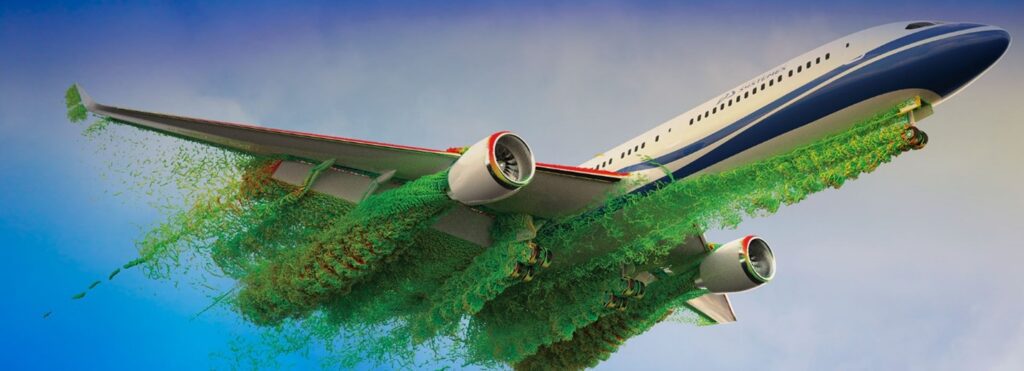Key Highlights
- The aerospace industry demands rigorous safety standards, and Finite Element Analysis (FEA) has emerged as a cornerstone for ensuring structural integrity in aircraft design and manufacturing.
- SIMULIA, a leading provider of FEA software solutions, is playing a crucial role in advancing safety standards with its cutting-edge tools and technologies.
- FEA enables engineers to virtually assess the performance of components under various loads and conditions, allowing for early detection and mitigation of potential design flaws.
- Through accurate simulation and analysis, SIMULIA empowers manufacturers to optimize designs, reduce physical prototyping, and accelerate time-to-market while maintaining the highest safety standards.
Introduction
Safety in aerospace engineering is non-negotiable. Every aircraft component must withstand extreme conditions while maintaining peak performance. That’s where Finite Element Analysis (FEA) comes in—giving engineers the power to simulate, test, and refine designs before they ever take flight. By identifying weaknesses and optimizing structures early in development, FEA reduces costly physical prototypes and accelerates innovation.
At the forefront of this revolution is SIMULIA, a leader in advanced simulation solutions. Its cutting-edge FEA tools are helping manufacturers push the boundaries of safety, efficiency, and performance. In this blog, we’ll explore how SIMULIA’s technology is reshaping aerospace design, ensuring aircrafts are lighter, stronger, and safer than ever before.
The Evolution and Principles of Finite Element Analysis in Aerospace
Before the rise of computational engineering, aerospace design relied on simplified calculations and extensive physical testing to validate structural integrity. This approach, while foundational, is time-consuming, costly, and limited in its ability to assess complex geometries and materials.
The introduction of finite element analysis in aerospace sectors has revolutionized the field. By breaking down intricate aerospace structures into smaller, manageable elements, engineers can apply physics-based simulations to predict how materials will respond under real-world conditions. This method provides a precise understanding of stress distribution, deformation, and potential failure points—enabling manufacturers to design safer, more efficient aircraft with greater confidence.
SIMULIA’s Role in Advancing Aerospace Safety
Known for its high-precision FEA solutions, the SIMULIA product protfolio provides engineers with essential tools to tackle critical challenges—ranging from structural integrity assessments to fluid dynamics and multi-physics simulations.
What sets SIMULIA apart is its commitment to accuracy, efficiency, and innovation. By leveraging advanced algorithms, high-performance computing, and intuitive interfaces, its software empowers engineers to design aircraft that are safer, lighter, and more fuel-efficient. With SIMULIA, aerospace manufacturers can refine designs faster, reduce physical testing costs, and meet the industry’s stringent safety standards with confidence.
Overview of SIMULIA Software Suite
To meet the diverse challenges of finite element analysis in aerospace, SIMULIA offers a powerful suite of simulation tools designed to enhance every stage of design and analysis. At the core of this suite is Abaqus, an industry-leading solution renowned for its ability to handle complex materials, non-linear behavior, and contact simulations. These capabilities allow engineers to accurately model real-world conditions—such as takeoff, landing, and in-flight stresses—ensuring aircraft structures can withstand extreme forces.
Beyond structural analysis, SIMULIA provides specialized tools for key aerospace applications.
- Fe-safe, for example, is dedicated to fatigue and durability analysis, helping engineers predict component lifespan under repeated stress cycles. This ensures that aircraft remain structurally sound throughout years of operation.
- Another vital tool in the SIMULIA ecosystem is Isight, which optimizes design exploration by automating simulation workflows. By testing multiple design variations efficiently, engineers can identify the most effective and reliable configurations while maintaining strict safety and performance requirements.
With this comprehensive software suite, SIMULIA empowers manufacturers to develop safer, more efficient, and highly optimized aircraft designs—all while reducing development costs and time-to-market.
How SIMULIA Enhances Structural Integrity
Ensuring the structural integrity of aerospace components is a critical priority in aircraft design. SIMULIA’s advanced FEA software plays a key role in this process by providing engineers with the insights needed to predict how components will respond under real-world conditions. Through a combination of precise modeling, powerful simulations, and in-depth analysis, SIMULIA helps manufacturers design safer and more resilient aircraft.
- Discretization: Complex aerospace structures are broken down into finite elements, each representing a small portion of the overall design. By applying forces and constraints to these elements—just as they would experience in real-world conditions—engineers can analyze how individual sections of a component behave.
- Solving Equations: Each finite element has degrees of freedom, meaning it can move, stretch, or deform under load. SIMULIA’s software uses advanced numerical methods to solve equations based on material properties and physics laws, predicting the exact response of each element under different stressors.
- Comprehensive Analysis: Once the calculations are complete, SIMULIA generates detailed visualizations and reports highlighting:
- Whether the design can withstand static, dynamic, and thermal loads
- Areas where stress concentrations could lead to fatigue or failure
- How design modifications impact overall performance and safety
Conclusion: Innovations on the Horizon
As aerospace engineering continues to evolve, SIMULIA remains at the forefront, equipping manufacturers with the tools needed to push safety, efficiency, and performance to new heights. Its advanced FEA technology enables engineers to design stronger, lighter, and more reliable aircraft—optimizing structural integrity while meeting the industry’s stringent safety standards. By leveraging cutting-edge simulations, aerospace manufacturers can reduce physical testing costs, accelerate development timelines, and enhance overall safety.
With an unwavering commitment to innovation and precision, SIMULIA is shaping the future of engineering. To explore how SIMULIA can support your next aerospace project, contact our experts today for a consultation.
Frequently Asked Questions
What Makes SIMULIA Unique in FEA for Aerospace?
SIMULIA offers great tools for finite element analysis (FEA) and finite element method (FEM). Their software helps with many tasks, including checking structural integrity and studying fluid dynamics. It also supports multi-physics simulations for a wide range of applications.
How Does FEA Contribute to Aerospace Safety?
FEA is a strong tool for engineers in the aerospace industry. It helps them test how components will act under different stress levels. This way, they can find weak points before they become problems in the real world.
What Are the Benefits of Using FEA in Early Design Stages?
Integrating finite element analysis (FEA) in aerospace early in design helps improve the shape of parts and check for vibration problems. This means you will depend less on expensive prototypes. As a result, you can create better and cheaper designs for aerospace projects.
How Does SIMULIA Help Reduce Physical Testing Costs?
By using advanced simulation tools, SIMULIA allows engineers to accurately predict material behavior and structural performance before building physical prototypes. This reduces the need for costly testing cycles, streamlining the development process while maintaining high safety standards.


